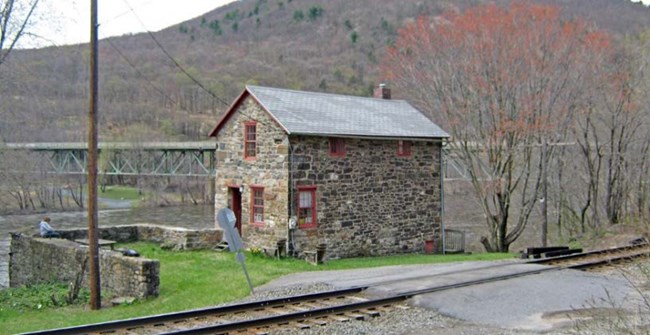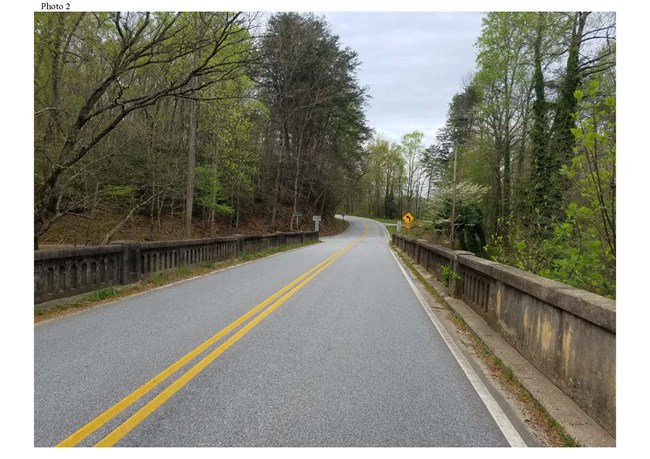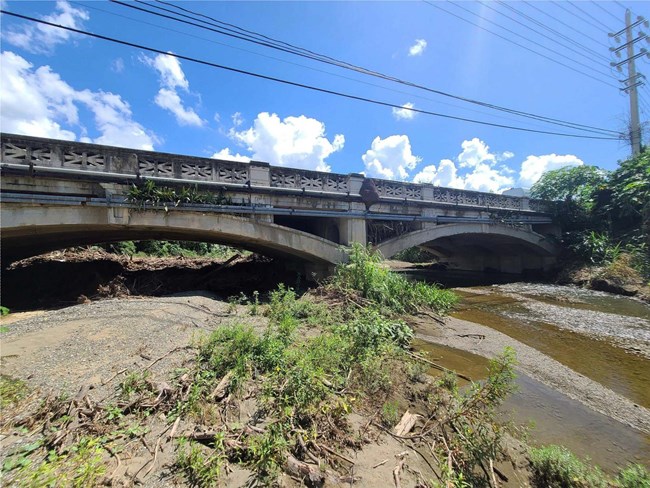The National Register of Historic Places is the official list of the Nation's historic places worthy of preservation. Authorized by the National Historic Preservation Act of 1966, the National Park Service's National Register of Historic Places is part of a national program to coordinate and support public and private efforts to identify, evaluate, and protect America's historic and archeological resources.

Photograph courtesy of Pennsylvania State Historic Preservation Office
Pennsylvania, Reference number: 100006837
Area of Significance: Transporation, Architecture/Engineering
Period of Significance: 1826-1931
The Lehigh Water Gap Chain Bridge Toll House and East Bridge Abutment is significant as it is an important example of a toll house from the early nineteenth century and its strong association with an important river crossing. It successfully illustrates the role toll roads and bridges played in establishing a modern transportation infrastructure in eastern Pennsylvania. In addition, this toll house and the surviving east bridge abutment were once connected with a James Finley chain link suspension bridge, the earliest type of suspension bridge in America. The toll house is also an important example of the vernacular architecture used for toll houses and lock tender houses in eastern Pennsylvania. Nomination provides great supporting documentation.
Link to file

Photograph courtesy of South Carolina State Historic Preservation Office
South Carolina, Reference number: 100006492
Area of Significance: Transportation, Politics/Government
Period of Significance: 1926-1929
The three bridges and five road segments are extant discontiguous sections of the original U.S. Highway 25 in South Carolina and are eligible at the local level under Criterion A: Transportation and Politics/Government. U.S. Highway 25 was established in 1926 as one of the original routes of the first federal highway system, a groundbreaking project aimed at bringing government support and coherence to the disjointed and underfunded system of locally and privately managed roadways that crossed the nation. This unique road which followed a historic trading trail reaching back to colonial times also followed the same route as the Carolina Division of the privately designated Dixie Highway and finally converted to the original route of U.S. Highway 25 in S.C. The hard-surfaced concrete road segments and bridges retain their historic integrity from the initial improvement of the highway during the late 1920s. These segments represent the transition from the informal named trail system to a new, standardized highway system overseen by an interstate bureaucracy. They capture a pivotal moment in the nation’s history when the federal government began to assume a more influential role in the improvement of automotive infrastructure.
Link to file

Photograph by Juan Llanes Santos, courtesy Puerto Rico Historic Preservation Office
Puerto Rico, Reference number: 100010383
Area of Significance: Transportation, Engineering
Period of Significance: 1919
This 1919 bridge is significant in Engineering as an excellent example of a reinforced concrete, open spandrel arch bridge designed by Rafael Nones, the dean of Puerto Rico’s public works engineers. The bridge is also significant in Transportation as an important link on the island’s coastal highway, which connected the large sugar mills located on the coastal plains.
Link to file
Last updated: August 13, 2024
